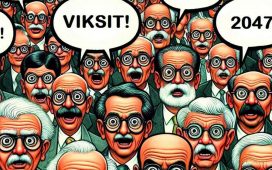
Effectively, Starbucks cemented its reputation as a ‘third place‘ – not home, not workplace, but separate from those two social environments. So, is Starbucks ‘rollbucking’ a setback for the ‘third place’ concept?
In a 1982 paper, The Third Place, sociologists Ray Oldenburg and Dennis Brissett defined the concept of a third place, with Oldenburg elaborating in his 1989 book, The Great Good Place, that it refers to ‘a great variety of public places that host the regular, voluntary, informal, and happily anticipated gatherings of individuals beyond the realms of home and work.’
Cafes, gyms, tea stalls, barbershops, salons, bookshops, bars, social clubs, and malls are standard options. The Bengali concept of the ‘rowak’ (front porch or step area) as a venue for such (male) gatherings, though, is fast disappearing. The neighbourhood ‘sporting/cultural club’ remains an option in Bengali neighbourhoods for such a third place.
Oldenburg viewed them as spaces for democracy and significant for civic engagement. In the forthcoming sequel to his book, The Great Good Place: Havens and Hangouts at the Heart of Community, he argues with co-author Karen Christensen, that these ‘third places’ have a vital role in addressing the major challenges of today: climate change, loneliness, and political polarisation.Globally, cafes have particularly evolved as ideal third places. ‘The place for them all, a meeting place for lovers, a club for people of common tastes or interests, an office for the occasional businessman, a resting place for the dreamer, and a home for many a lonely soul’ — this is how the Viennese coffee house is described in Ludwig Hirschfeld’s 1931 guidebook, The Vienna That’s Not in the Baedeker. Perhaps, this description should serve as a model for the kind of cafes we need today: third places where you can unwind and be yourself. Other than passing the peanuts and extending some courtesy and good humour, you have no other obligations.Interestingly, most third places globally have derived their identities from beverages they serve. There were ‘3.2 bars’ (serving 3.2% alcohol by weight ‘low-point beer’ mostly to young adults) in the US, gin palaces in Britain, and the still popular Biergarten (beer gardens) in Germany. Coffee is particularly important, as the French word for it ‘cafe‘ makes amply clear.
Early examples of distinct physical spaces separate from home and workplace include the ancient Greek agora (public square) and imperial Chinese teahouse. During the 17th century, coffee shops in Europe evolved into social hubs. Engineers developed the first public railway in British pubs, while Paris cafes brewed the French Revolution.
Coffeehouses in 17th c. Britain were called ‘Penny Universities’ because they provided opportunities for intellectual exchange at minimal cost: a pipe cost a penny, a cup of coffee was two pence, and a newspaper was free. In Kolkata, the Coffee House on College Street remains an iconic contributor to the city’s ‘intellectual’ and cultural life.
There’s a distinction between public spaces and third places, though. According to Christensen, most coffee shops and pubs actually don’t qualify as third places. In third places, people are diverse and often feisty. These spaces have regulars, are affordable, convenient, unstructured, and serve as neutral ground for conversation and laughter. According to Oldenburg, third places are fun. Here, we smile, laugh, joke, tease.
Unfortunately, Covid lockdowns damaged many such in-between places. Consequently, the third place is now being adapted and promoted globally-especially online-in the post-pandemic era. Starbucks may have just got behind the curve.











